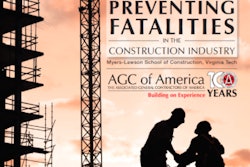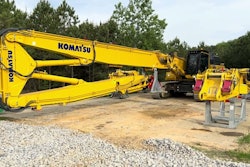Depending on whom you talk to in the construction, aggregates and paving industries, the three-month enforcement delay of federal silica dust rules is an opportunity to fine-tune the compliance guidelines, or it’s a minor speedbump toward excessive government regulation.
The Occupational Safety and Health Administration (OSHA) announced April 6 it would delay the enforcement date for the construction industry’s set of rules from June 23 to September 23. The rules require an 80-percent reduction in respirable crystalline silica on average during an eight-hour shift. The goal is to reduce and prevent lung cancer, silicosis and other respiratory ailments caused by overexposure to crystalline silica, a common chemical compound found in rock, concrete and brick.
OSHA says the rule will save more than 600 lives and prevent more than 900 cases of silicosis each year.
The Construction Industry Safety Coalition (CISC), which is fighting the silica rules in federal court, issued a statement saying it welcomed the OSHA delay, but contends the agency should hold off on enforcing the rules for at least a year. About a month before OSHA announced the delay, the CISC sent a letter to then-acting Labor Secretary Edward Hugler calling for a one-year enforcement delay.
“Construction employers across all trades are finding compliance extremely difficult if not impossible for many job tasks,” the letter says. “…These challenges are compounded by OSHA’s failure to issue meaningful guidance on several key aspects of the standard.…
“The rule imposes burdensome ancillary requirements regarding exposure assessment, respiratory protection, medical surveillance, hazard communication, recordkeeping and housekeeping.”
The coalition consists of 25 construction trade and related organizations, including Associated Builders & Contractors, the American Road & Transportation Builders Association, Associated General Contractors of America, and the National Home Builders Association.










